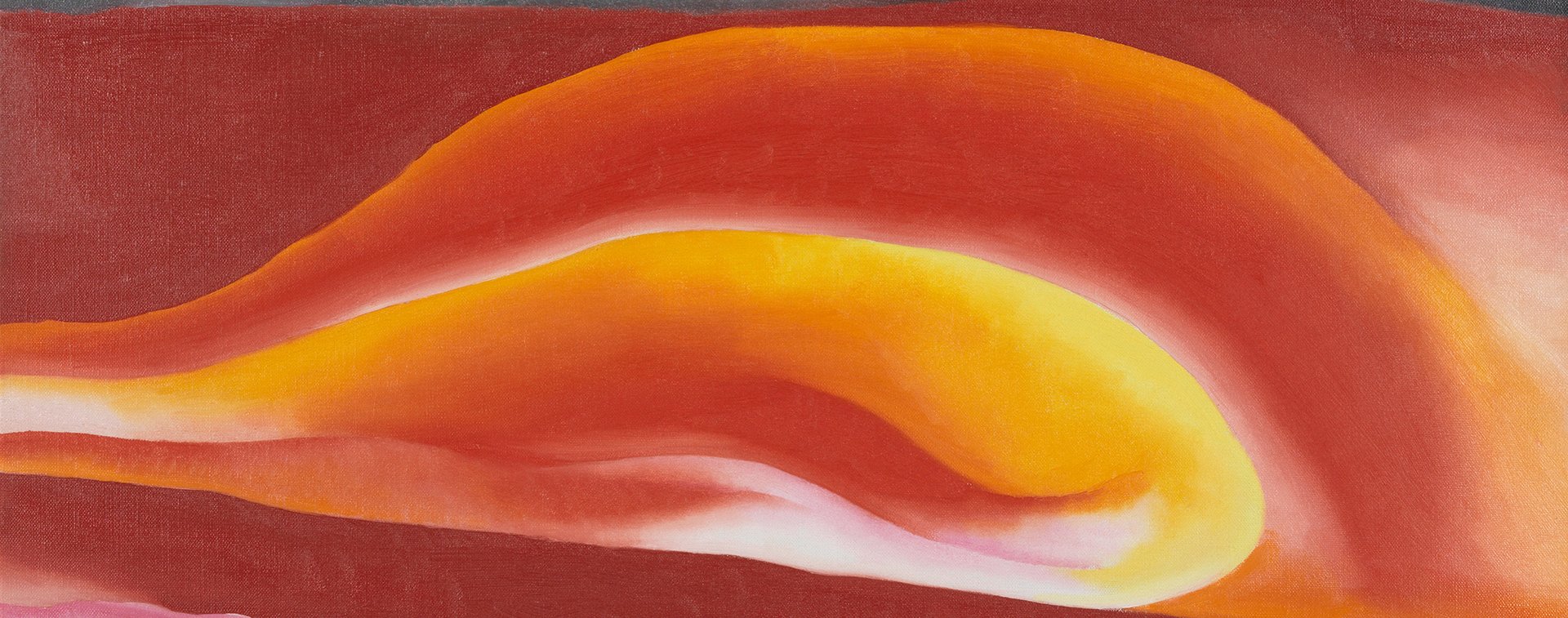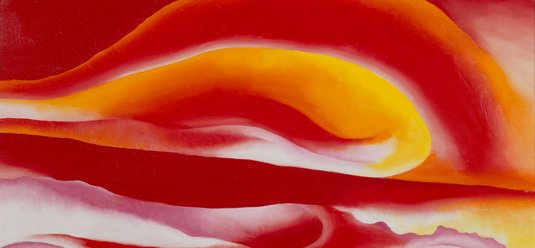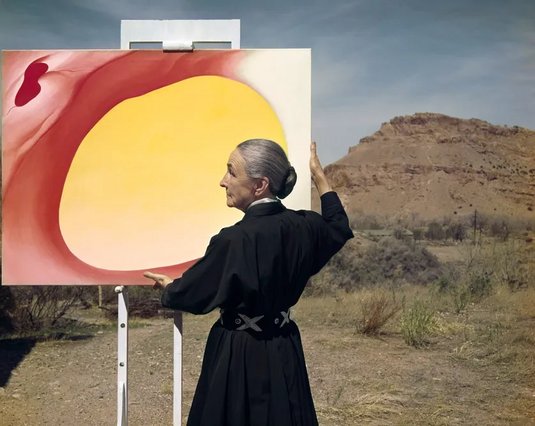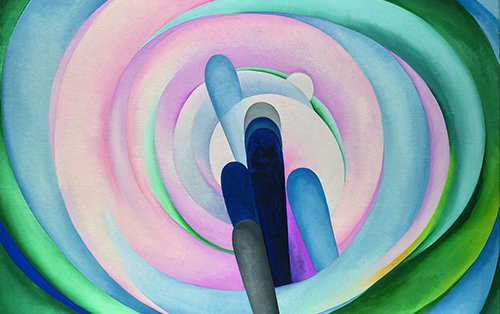
Focus on... Georgia O'Keeffe’s “Red, Yellow and Black Streak”
Georgia O’Keeffe grew up on a farm in Wisconsin. She first arrived in New York in 1907, to attend an Art Students League course. She absorbed avant-garde ideas at the 291, an art gallery run by photographer Alfred Stieglitz, where she was to discover works by Rodin, Braque, Picasso and Matisse. From 1911 onwards, she started teaching visual arts and commercial art in various states, including South Carolina and Texas. She took an interest in Arthur Dove’s organic pastels and explored a repertory of geometric and organic shapes, in which she expressed her “inner world”. In 1916, her friend Anita Pollitzer showed her watercolours to Alfred Stieglitz, who exhibited about ten of her works in a collective exhibition, then organised her first personal exhibition at the 291 the following year. In 1918, the artist settled in New York, of which she painted impressive architectural views. She moved in with Stieglitz and married him in 1924. The couple spent their summers at Stieglitz’s family home, on the banks of Lake George in the Adirondack mountains. Fascinated by the splendid sunsets over the lake, Georgia O’Keeffe painted many of her works there.
O'Keeffe's landscapes do not depict reality; they are mental projections in colour, drawing on a range of chromatic sensations.
Red, Yellow and Black Streak was part of the Lake George scenery series. It was first displayed at a group exhibition at the Anderson Galleries in New York in 1925. Her landscapes do not depict reality; they are mental projections in colour, drawing on a range of chromatic sensations. However one does sense an intense notion of space, in which the heavens, land and water swirl together in flamboyant orange, red and purple hues. Georgia O’Keeffe used a fluid yet “Precisionist” technique, with motifs always pared down to their very essence. Parallel to this series of abstract works, she also explored the still life genre, depicting flowers, forging a reputation for her photographic, monumental framing. Her iconography of giant flowers, skulls and the desert scenery of New Mexico where she moved after Stieglitz’s death in 1946, reflected her cosmic, intimate perception of nature. ◼
Extrait du catalogue Collection art moderne — La collection du Centre Pompidou, Musée national d’art moderne, sous la direction de Brigitte Leal, Paris, Centre Pompidou, 2007
Related articles
Georgia O'Keeffe, « Red, Yellow and Black Streak » (Stries rouge, jaune et noir), [1924]
© Georgia O'Keeffe Museum / Adagp, Paris
© Centre Pompidou, Mnam-Cci /Dist. Rmn-Gp
![Georgia O'Keeffe Red, Yellow and Black Streak (Stries rouge, jaune et noir), [1924] Huile sur toile, 101,3 x 81,3 cm © Georgia O'Keeffe Museum / Adagp, Paris © Audrey Laurans - Centre Pompidou, MNAM-CCI /Dist. RMN-GP](/_elastic_filemount/media/picture/dc/2b/dc2b1b66b71c997659885ef164bae4b8/thumb_large.jpg)



